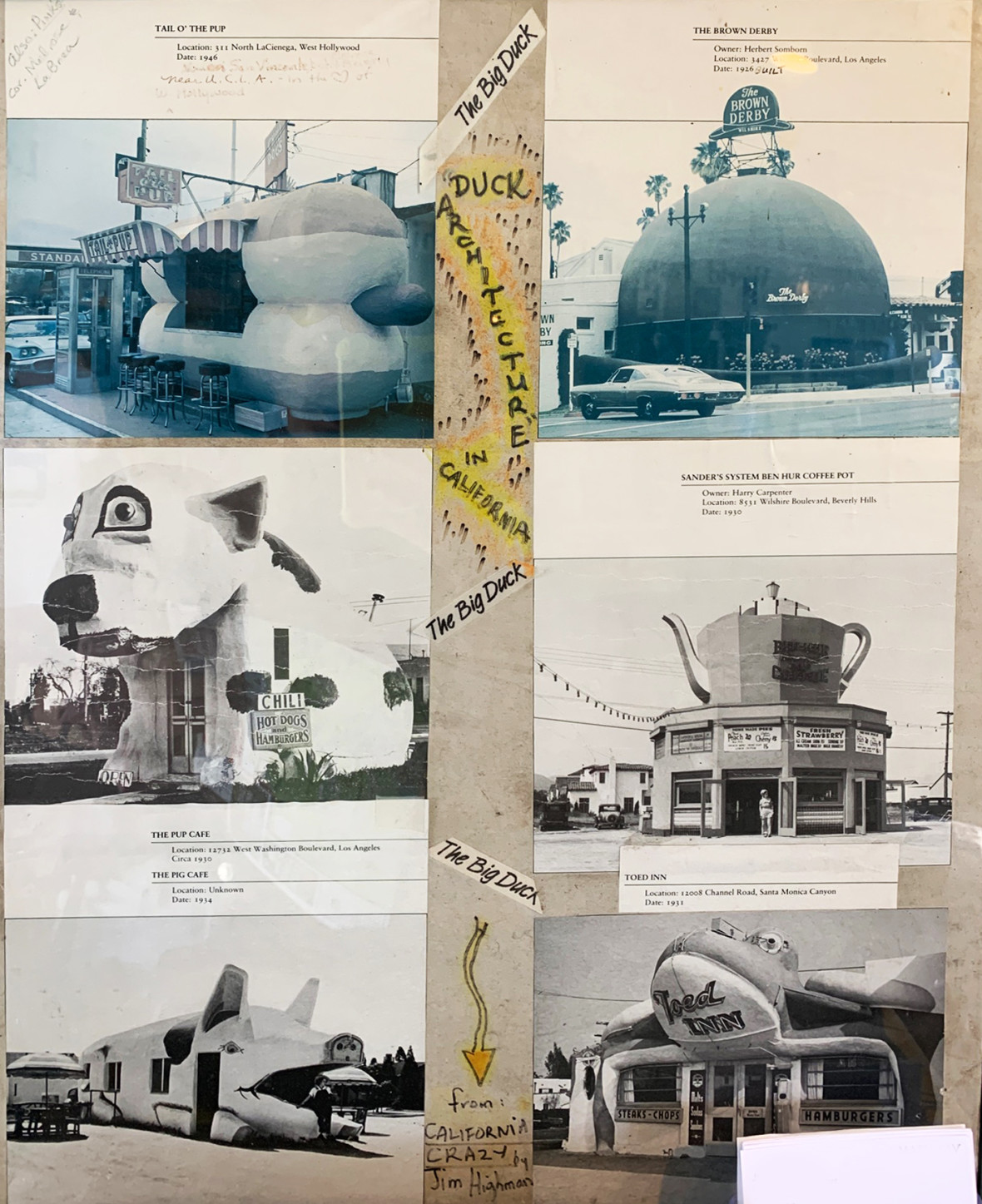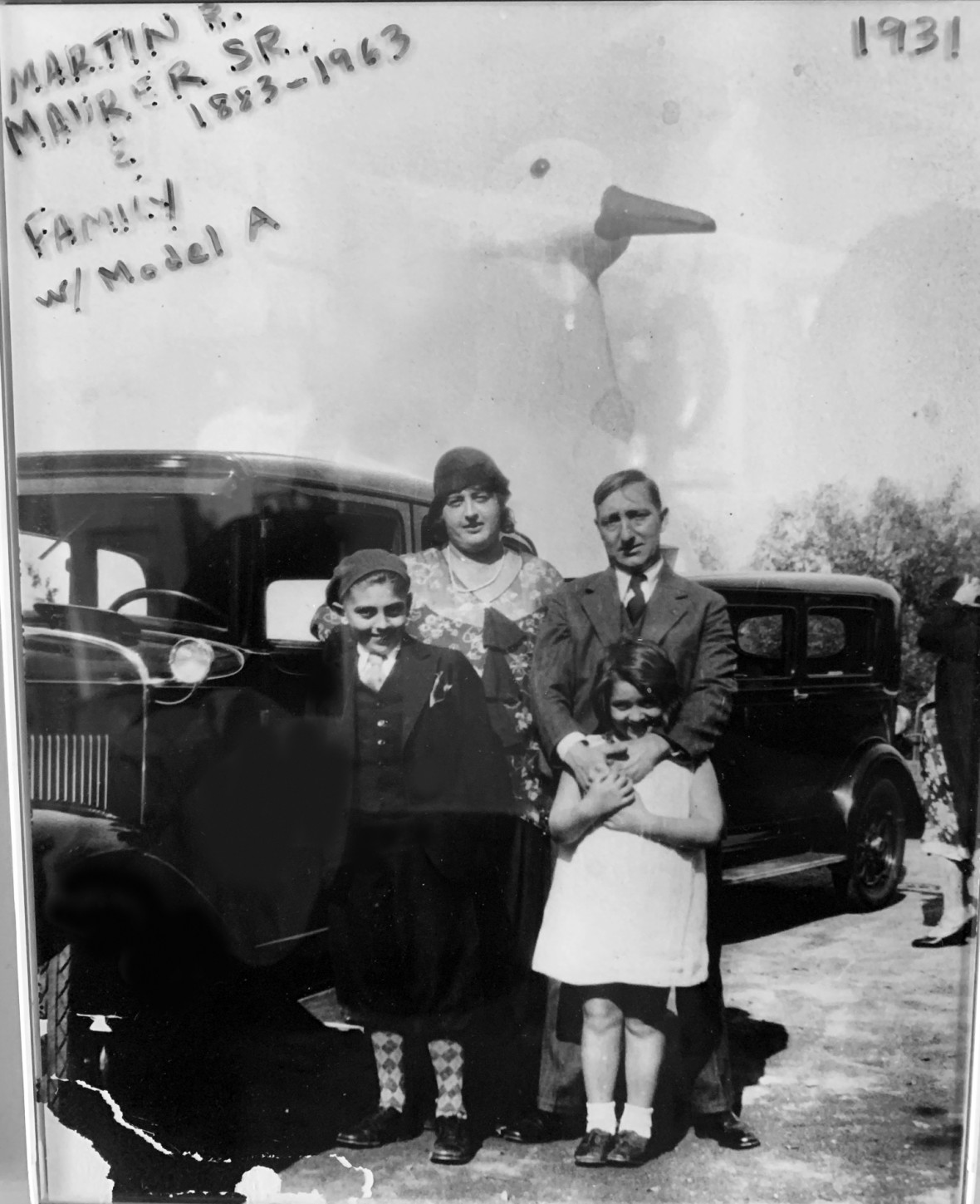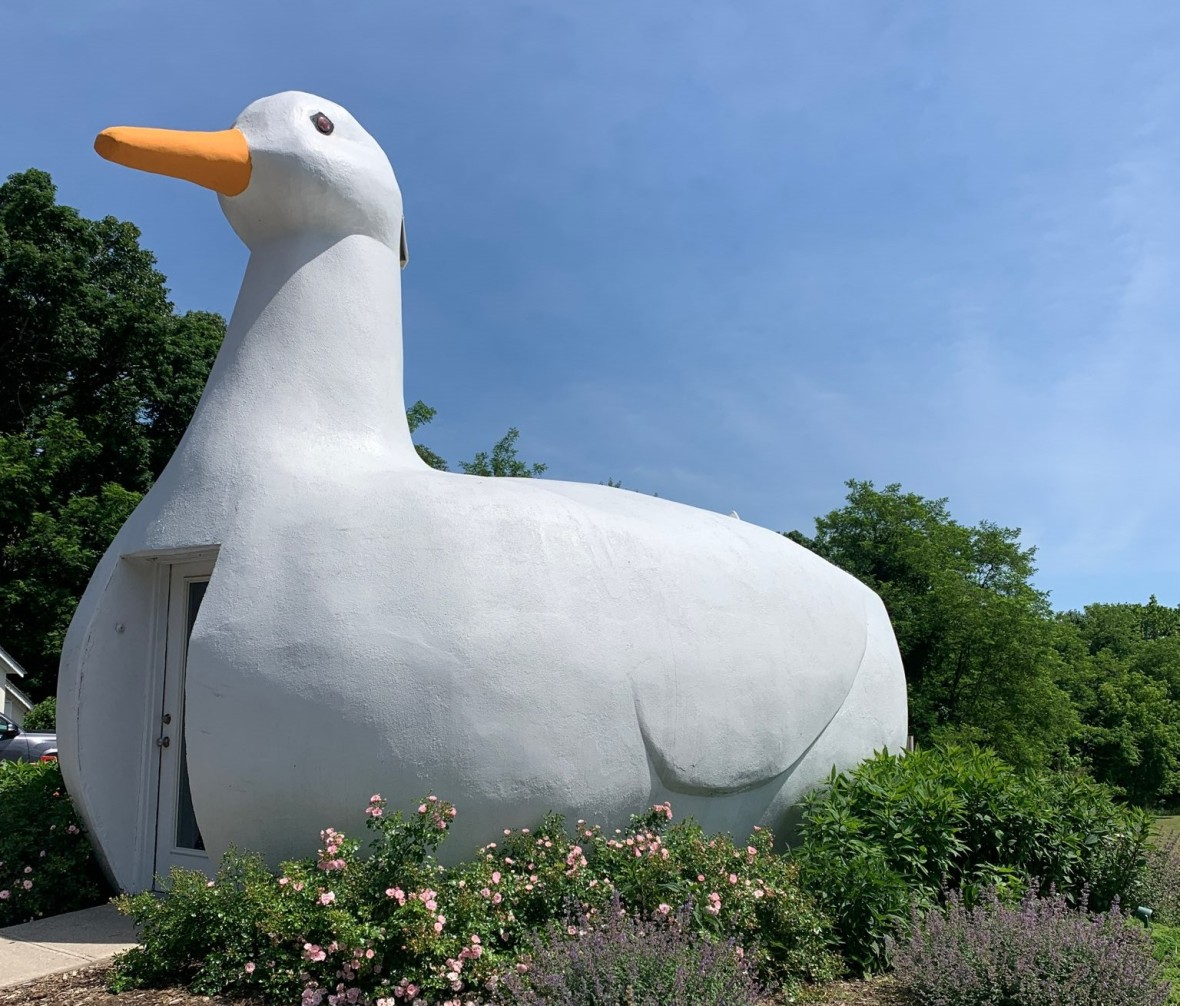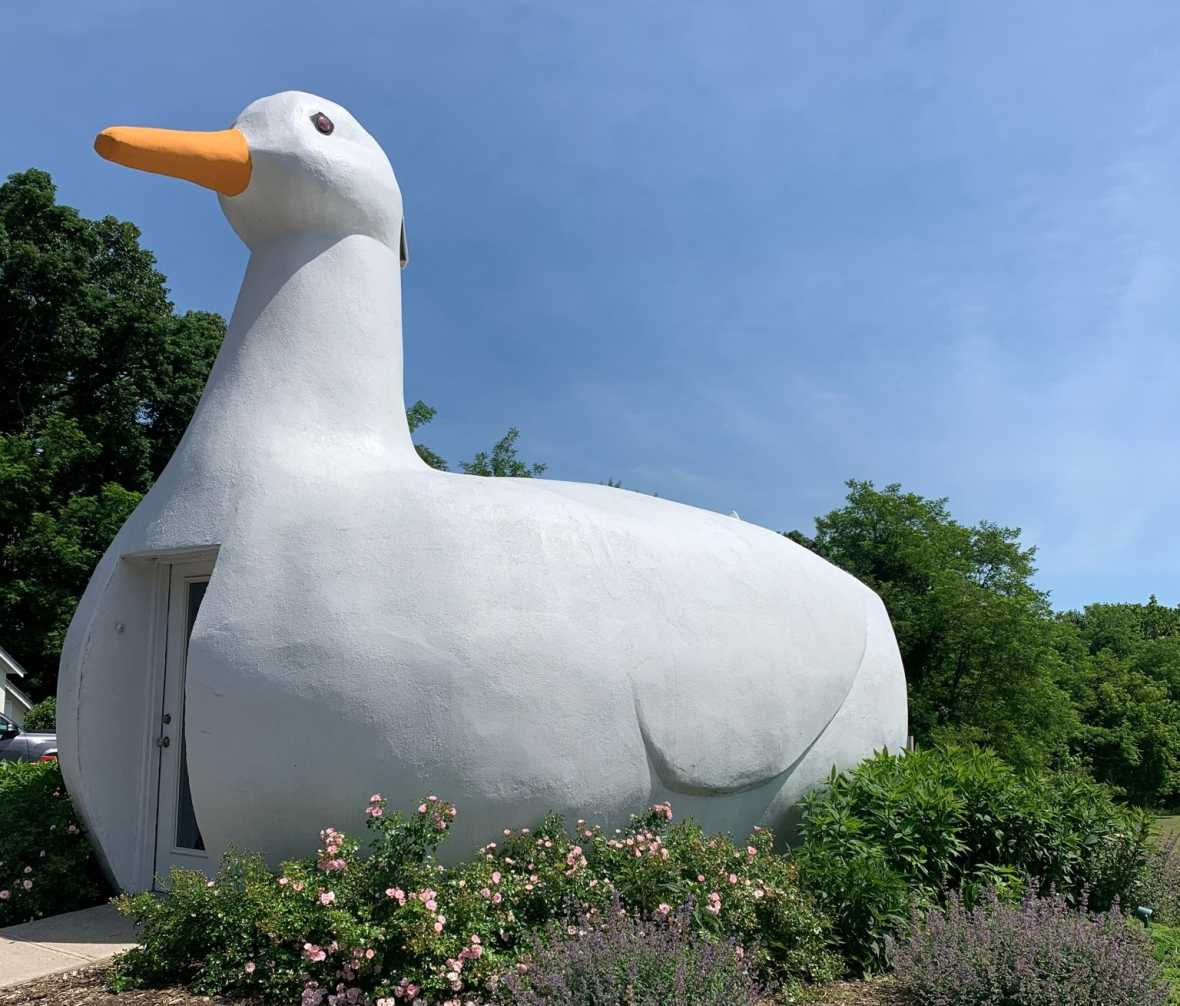Many Long Islanders claim The Big Duck is southeastern New York's most prized landmark, soaring in popularity over the Montauk Lighthouse. Designed in the likeness of a Pekin duck, this 20-foot-tall fowl was commissioned by Martin Maurer, a Long Island duck farmer, and was constructed in 1931.
Located in Flanders, architectural enthusiasts, duck lovers and those in search of a classic roadside attraction can visit this Suffolk County sensation for free, as there's no admission fee. It's even accessible by train, sitting not too far from the Riverhead LIRR Station.
LIRR
Ronkonkoma
The Big Duck is a 15-minute bike ride, or 8-minute car ride from the Riverhead station
Below, learn about the beloved duck, its origins and inspiration, and everything else you need to know about this one-of-a-kind destination.

“Duck Architecture,” a term coined by architects Robert Venturi and Denise Scott Brown in 1968, refers to sculptural forms that represent products or services for purchase inside — and indeed, at one time The Big Duck boasted ducks and eggs for sale.
These days, it operates as a quirky museum and gift shop, and on weekends you may find lines out the door, but fear not, they are fast moving. While you wait, you can snap your selfies, just be sure to tag @thebigduckli when you do.
When you enter, you’ll likely be greeted by Suffolk County Park Ranger Mr. T., a charismatic duck enthusiast with encyclopedic knowledge about The Big Duck’s fascinating and turbulent history. Lining every inch of the interior are newspaper clippings, memorabilia and photographs that help illustrate its story.

In particular, look for the illustrated Big Duck cover of the New Yorker, from May 11, 1987. And the “Save The Duck” vintage 1980s T-shirt (not for sale, sigh), featuring the Big Duck with a single teardrop coming from its eye.
While there, you’ll also learn from Mr. T about the mysterious egg discovery in the basement of structure (no spoilers), and the delightful song written by folk singer Caroline Doctorow in homage to the attraction (she even performed the tune live at The Big Duck's 90th birthday party in 2021). There's no shortage of eccentric details and anecdotes surrounding The Big Duck’s storied past, and you'll hear them all.
BIG DUCK HISTORY
But why is there a gigantic duck on the side of the road on Long Island? To prepare for your visit, here's some background: Pekin duck farms flourished throughout Suffolk County from the 1930s through the 1960s. History tells us the ducks came via ship from China in 1870. Since the bird is flightless, and its meat delicious, farming of Pekin developed quickly into a lucrative business.
But the competition was fierce. The savvy Riverhead duck farmer Martin Maurer and his wife had an idea to set their duck ranch apart from the competitors. The concept came about when the couple was vacationing in California. There, they passed a roadside coffee shop that was shaped like a coffee pot. Here, The Big Duck idea was hatched.
Maurer hired local carpenter George Reeves and set designers, brothers William and Samuel Collins, to construct the duck, with a live duck serving as a model. The architects also studied the carcass of a cooked chicken to create a plan for the frame. The structure is built of wood, wire, and mesh, and its eyes are notably made from Model-T tail lights. All in all, The Big Duck is 30 feet from its beak to its tail, and weighs in at 10-tons.

With this success, Maurer purchased land in 1936 and moved his ranch and the gigantic duck from Riverhead to its current location, on Route 24 in Flanders. But duck farming declined due to pollution issues in the 1960s, and what was left from the farming era was The Big Duck, which was blissfully undisturbed for 20 years, until the 1980s.
"SAVE THE DUCK" CAMPAIGN
In the '80s, The Big Duck's fate was on the chopping block. The land it grazed was set for development. The community was outraged and organized a "Save the Duck" campaign, which even caught the attention of Christie Brinkley, Billy Joel’s then wife, who advocated on public access television to save the structure. The efforts were a success and in 1987, instead of demolition, this giant piece of novelty architecture was delicately transported on a tractor trailer to a nearby county park.
Brinkley became the "voice of the duck," after recording a 90-second taped message that promoted it as a tourist destination, and the New York Times declared the attraction "a cherished symbol of the region."
This wasn't its final journey, however -- in 2007, the duck migrated again, and this time was relocated to its former site in Flanders, to the delight of the community. There, in 2008, The Big Duck finally earned its rightful designation and was placed on the National Register of Historic Places.

GETTING THERE
Take the LIRR for a car-free, no traffic trip. Depart from Manhattan (Penn Station), Brooklyn (Atlantic Terminal), or Queens (Jamaica Station) to the Riverhead station (Ronkonkoma Branch) located on Osborne Avenue, North of West Main Street (Route 25).
The best way to navigate the short 2.8 miles from the Riverhead Station to The Big Duck is via bike, and you no longer need a permit to travel with one on the LIRR. Just check out the guidelines before your trip.
The Big Duck is located on 1012 Flanders Rd., Flanders, NY. It's open year round, 7 days a week (Monday - Friday 10 a.m. - 5 p.m., Saturdays 10 a.m. - 3 p.m., Sundays 10 a.m. - 5 p.m.). 631-852-3377. www.bigduck.org.
While visiting The Big Duck, explore these nearby attractions and dining options on the North Fork:
Hike at David A. Sarnoff Pine Barrens State Forest and see Long Island’s unique pine barrens, or rent a canoe or kayak at Hubbard County Park located on Flanders Bay and the Peconic River.
Shop for homemade jams, pies, produce and flowers at Breitenbach Farms. Or have lunch at Breitenbach’s new greenhouse cafe.
Grab a beer at Peconic County Brewing or wine at Jamesport Vineyards. Dine on the water at On The Docks.
Make it a weekend trip and stay overnight on the North Fork at Bomens on the Bay, The Shorewood Inn or at The Breeze Bay Inn.



